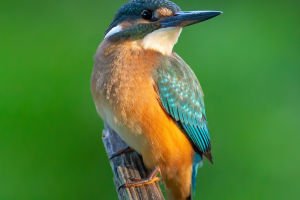Polar Bear Survival
Lykkers, have you ever wondered what it would be like to live in the Arctic, surrounded by snow, ice, and the occasional polar bear?
Imagine being part of a world where the cold is so intense that only the toughest animals, like the polar bear, can thrive.
The Majestic Polar Bear: King of the Arctic
The polar bear, known scientifically as Ursus maritimus, is one of the most iconic species on Earth. Residing in the Arctic, these majestic animals are the largest land carnivores, with males weighing up to 700 kg (1,540 lbs) and females slightly smaller. The polar bear’s body is perfectly adapted for life in this harsh environment, making them one of the most resilient creatures in the wild.
1. Physical Characteristics
Polar bears are well-known for their thick white fur, which provides insulation against the freezing temperatures of their habitat. This fur also acts as camouflage, helping them blend into the snowy landscape, which is vital for hunting. Beneath their fur lies a thick layer of fat, which can be up to 11 cm (4.3 inches) thick, offering additional warmth and energy storage during periods of food scarcity.
The paws of a polar bear are another unique adaptation. Their large, webbed paws, which can span 30 cm (12 inches) across, allow them to swim efficiently through icy waters and walk on thin ice. The pads of their paws are covered with small bumps called papillae, providing extra grip on the ice. This remarkable physical structure enables them to travel long distances in search of food, sometimes covering over 30 km (19 miles) in a single day.
2. Diet and Hunting
As apex predators, polar bears have a diet primarily consisting of seals, particularly ringed and bearded seals. Their hunting method is both stealthy and efficient; they often use a technique known as "still-hunting," where they wait patiently by seal breathing holes, striking as soon as a seal surfaces for air. Their powerful sense of smell allows them to detect prey nearly 1.6 km (1 mile) away and beneath several feet of compacted snow.
In the summer months, when the sea ice melts, hunting becomes more challenging for polar bears. This is when they rely on their stored fat reserves to survive. Some bears may also scavenge or turn to bird eggs, small mammals, or vegetation, though these are far less nutritious than seals.
Polar Bear - The King of the Arctic Region
Video by WildFacts
3. Threats to Their Survival
Despite their incredible adaptations, polar bears face significant threats. Climate change is the most pressing issue. As global temperatures rise, the Arctic sea ice is melting at an alarming rate, reducing the habitat available for polar bears to hunt seals. Without ice, their hunting grounds shrink, forcing them to travel greater distances for food and decreasing their chances of survival.
Human activities, such as oil exploration and shipping, also threaten the Arctic ecosystem. Pollution, particularly oil spills, can have devastating effects on polar bears by contaminating their environment and food sources. Additionally, human-bear conflicts are increasing as polar bears venture closer to human settlements in search of food.
Conservation Efforts
Thankfully, numerous conservation efforts are in place to protect polar bears and their Arctic home. Many organizations are working to combat climate change by advocating for reduced carbon emissions and promoting renewable energy. Additionally, protected areas and regulations are being established to minimize human impact on the Arctic region.
Educating the public about polar bears and the challenges they face is crucial for their long-term survival. By understanding the plight of these incredible animals, we can take steps to ensure that future generations will continue to marvel at their beauty and strength in the wild.
What do you think, Lykkers? Are polar bears not one of the most fascinating animals on Earth? Let's do our part in ensuring their survival in the rapidly changing world!


